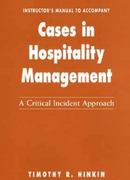Question
Global supply chains are buckling, driving up prices, creating shortages and frustrating consumers. If at any point in the past seven months you looked out
Global supply chains are buckling, driving up prices, creating shortages and frustrating consumers. If at any point in the past seven months you looked out to sea from the Los Angeles-Long Beach container port complex, the largest in the U.S., you would see the problem: up to 40 container ships anchored, with nowhere to go. There's no space in the clogged ports. To put it another way, you're looking at as many as 100,000 containers -- holding everything from running shoes and home electronics to frozen seafood and furniture -- waiting to be unloaded and then shipped to factories, stores and homes across the country.
U.S. ports are severely stressed, a problem that won't disappear with the pandemic. Not one U.S. port was represented in the top 50 container ports globally in productivity performance, according to the new Container Port Performance Index by the World Bank and IHS Markit, released last month.
For more than a decade, disruption to the flow of goods has occurred repeatedly at U.S. ports, not to mention global incidents such as the Suez Canal blockage, container-ship infernos, fog-enshrouded ports and waves that send thousands of containers tumbling into the sea. Less than 1% of the $2.3 trillion Biden infrastructure plan is slated for ports and waterways. But no amount of spending could remove all the obstacles to a smooth flow of goods through U.S. ports.
Why? The answer comes down to a complicated transportation market. Capacity is deployed according to shifting company and investor calculus, a complex system of handoffs between land and sea that has long resisted coordination. Longshore labor relations hinder improvements in productivity.
The pandemic triggered a shift in consumer spending away from travel to electronics and home-improvement goods. And then there's Covid-19's effect on the workforce: Many workers who received stimulus and unemployment checks are choosing to stay home, contributing to labor shortages at seaports and warehouses. That has slowed the normal circulation of containers back and forth from Asia, reducing capacity and driving freight rates to record highs. Pair that with surging traffic: The ports of Los Angeles and Long Beach, which together form the largest container gateway in the Western Hemisphere, have posted double-digit import volumes every month since August except January, according to IHS Markit data.
But though Covid sparked arguably the most severe port disruption seen since the first container ship was launched 65 years ago, such shocks are becoming frequent. In late 2018, importers accelerated shipments from China to beat the scheduled 25% tariff increases set to take effect on Dec. 31, causing surprise gridlock during a normally quiet time of year.
There are no solutions in sight. One problem is productivity. In Asia, ships are worked 24/7, or 168 hours a week, compared with 16 hours a day, or only 112 hours a week, at Los Angeles-Long Beach. Terminal gates used by truckers to deliver and receive seaborne containers operate only 88 hours a week, vs. 168 in Asia. For larger ships, it takes 24 seconds on average to move a container at the Chinese ports of Shanghai, Qingdao and Yantian, vs. 48 seconds at Los Angeles, according to IHS Markit port-performance data. That leaves the port system chronically vulnerable to unanticipated volume surges.
Another repeated cause of disruption is longshore labor. A decades-long history of toxic labor-management relations has led to huge cost increases that discourage operators from expanding work hours, limit their ability to automate terminals, and end in avoidable delays during contract negotiations. Many companies won't soon forget six months of costly delays at West Coast ports during contract negotiations with the International Longshore and Warehouse Union in 2014 and 2015. More than 30 container ships were backed up at anchor off the ports during that episode. Companies will be closely watching the next round of negotiations in 2022.
There is no sign that the labor-management paradigm will change, and a Democratic administration is unlikely to challenge longshoremen's unions to make compromises. Better information systems would improve coordination among ports, trucks, rail and shippers. But data sharing that would enable greater efficiencies falls victim to "data protectionism," the fear of sharing data, and has never progressed very far.
Finally, transport companies deploy capital in the form of ships, trucks, chassis, railcars and other assets as informed by their market view. Given that forecasting trade flows weekly is difficult -- let alone anticipating pandemics, trade disputes and economic cycles -- frequent imbalances in supply and demand, and delays, are the inevitable result.
As a result, fleet operators and shippers -- and customers -- have to accept periodic disruption. That means a greater focus instead on resiliency. One looming risk is geopolitical: With tensions rising between Washington and Beijing, it's worth keeping in mind that 42% of all containers arriving in the U.S. come from China.
Questions to answer:
- What are the key points of the article?
- What are the most impressive or important things you have learned from the article?
Step by Step Solution
There are 3 Steps involved in it
Step: 1

Get Instant Access to Expert-Tailored Solutions
See step-by-step solutions with expert insights and AI powered tools for academic success
Step: 2

Step: 3

Ace Your Homework with AI
Get the answers you need in no time with our AI-driven, step-by-step assistance
Get Started


